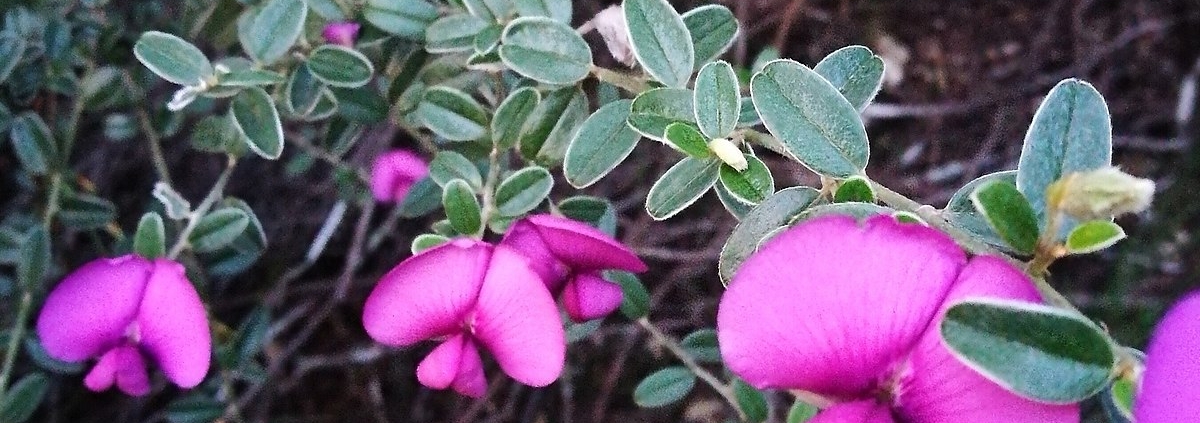Recommended plant: Podalyria buxifolia
Family: Fabaceae
Common names: box-leaf bush-sweetpea
Podalyria buxifolia is a spreading, well-branched, resprouting shrub growing to 1m high with a 2m spread. The leaves are simple, alternate, 30mm long and up to 10mm wide with a pronounced midvein. They are dark, glossy-green on top and have silky white hairs on the lower surfaces that produce a silvery sheen. The stems are thin and wiry and light green. The attractive, magenta, and strongly fragrant flowers are produced near the branch ends. Flowering time is from Autumn to winter, i.e. from August to April in natural conditions. The flowers are followed by narrowly inflated, hairy, green pods maturing to brown, approximately 40×15 mm. The pods dry to a crisp and split during hot weather to release several small seeds with fleshy, collar-like arils. Podalyria buxifolia is a fynbos plant and occurs in the winter-rainfall Western and Eastern Cape.
Temperature and Lighting
Podalyria buxifolia tolerates from 0-400 Celsius but should be protected from frost. It requires plenty of sun and good light conditions. It is a superb addition to a rockery or mixed planted in a garden. It responds well to pruning.
Watering and Feeding
It is a resilient plant and adapts well to warm temperate and Mediterranean conditions.
Soil and Transplanting
Podalyria buxifolia is easy to grow from seed, but not from cuttings. If you want to try this method, it is recommended to take re-sprout cuttings off the root stock when possible. Sow and grow seedlings under cover so that you can control watering. Sow seed in autumn or spring/summer which will germinate well providing that it is treated with a hot water soak. Use a well-drained mixture of sand and well-rotted compost. The medium must be acidic ranging from about pH6,5 to-5.5. Young plants are best pricked out into plug trays and only potted on into larger containers when necessary.
Pests and Disease Control
No pests and diseases noticed. Suggest not to overwater as saturation of medium might result in damping off.
USDA hardiness zones 9 to 11. Outdoors place the plant in a sunny spot with well-drained soil and good air



